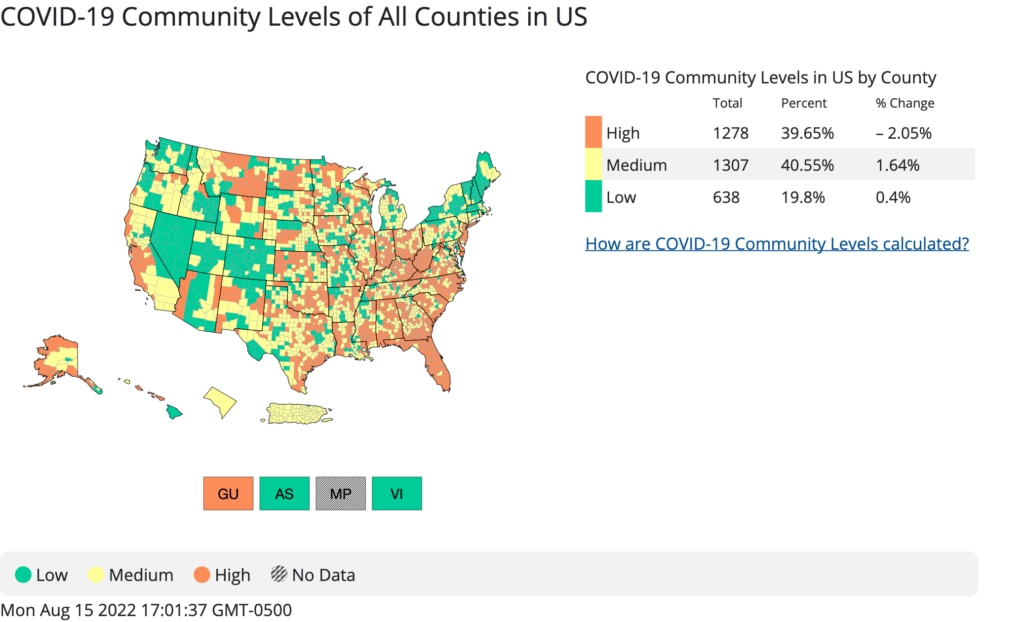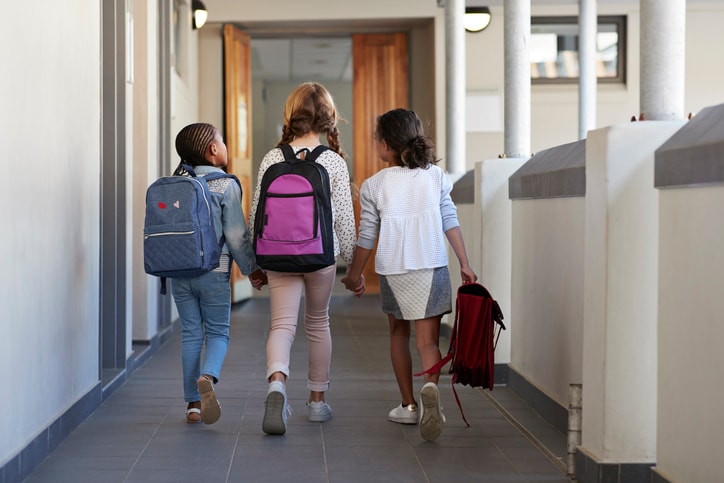Just in time for the new school year, the Centers for Disease Control and Prevention (CDC) has released a fresh update to COVID guidelines for K-12 schools. The new guidance eases or clarifies many of the restrictions that have been in place over the past two years. Here’s a look at what’s changed and what parents and caregivers can expect as kids head back to the classroom.
What’s different about the new COVID guidelines?
The new CDC guidance leaves many decisions about COVID prevention to individuals and local officials. On the agency’s official Twitter account, the CDC says the updated guidelines are intended to “make it easier for schools to assess their risk and take action to protect students and staff.”
In general, the updated guidelines recommend:
- Wearing a high quality mask for 10 days after exposure, rather than quarantining.
- Testing for COVID before high-risk activities, when symptoms are present and during outbreaks.
- Staying up-to-date on all vaccines, including routine immunizations.
- Isolating for at least 5 days after testing positive for COVID and wearing a mask until day 10.
- Restarting isolation if COVID symptoms reappear post-infection.
The new guidance is the same for all students and school staff, regardless of vaccination status. Most importantly, the CDC recommends using layered prevention strategies and adjusting protocols as case numbers change.
So, do kids need to wear masks at school?
The CDC isn’t recommending universal mask wearing anymore, but that doesn’t mean masks are gone for good. Now, the CDC says a well-fitting mask should be worn:
- Through day 10 of a COVID infection.
- For 10 days after COVID exposure.
- In indoor settings when local COVID transmission is high.
As of this week, nearly 40% of U.S. counties have high transmission, according to the CDC’s community data.

Additionally, the CDC still supports individual mask wearing in any circumstance to curb virus transmission. “Anyone who chooses to wear a mask should be supported in their decision to do so at any COVID-19 Community Level, including low,” the guidance states.
Do kids need to quarantine after being exposed to COVID?
One of the biggest changes to the CDC guidance is the elimination of “test to stay” protocols that required quarantine periods and a negative COVID test in order for kids to return to class after virus exposure.
Now, the CDC says kids may remain in school post-exposure, but they need to “wear a well-fitting mask or respirator around others for 10 days from their last exposure, regardless of vaccination status or history of prior infection.” If virus symptoms develop, the CDC recommends staying home. Those who test positive for the virus should isolate for at least five days.
If students or staff come to school with virus symptoms, the CDC says they should:
- Be asked to wear a well-fitting mask or respirator while in the building.
- Separate from others as much as possible.
- Be sent home and asked to test for COVID.
What else does the CDC recommend to prevent COVID at school?
Ultimately, the CDC says school officials will need to decide what prevention strategies to use in the case of an outbreak. In addition to offered strategies, like mask wearing and vaccination, the CDC also recommends:
- Improving ventilation and air quality.
- Practicing hand hygiene and respiratory etiquette.
- Regular cleaning.
- Implementing screening procedures for high-risk activities, such as sports.
The CDC also says school administrators should consider additional prevention strategies to “accommodate the health and safety of students with disabilities and protect their civil rights and equal access to safe in-person learning.”
The latest COVID guidance is less strict than in past years, but the virus continues to spread in the U.S. The national case average is just over 100,000, though the New York Times reports that known daily cases have fallen 15% over the past two weeks.
“We’re in a stronger place today as a nation, with more tools — like vaccination, boosters and treatments — to protect ourselves, and our communities, from severe illness from COVID-19,” a CDC statement says. “This guidance acknowledges that the pandemic is not over, but also helps us move to a point where COVID-19 no longer severely disrupts our daily lives.”






